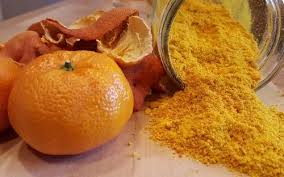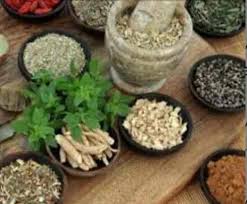Dirghaanshi explores the power of Ayurveda for pain management and recovery, offering natural and holistic remedies to address a variety of pain-related conditions. Ayurveda, an ancient healing system, emphasizes balance in the body and mind to alleviate pain, reduce inflammation, and support the body’s natural recovery processes. With the use of herbs, oils, and therapeutic practices, Ayurveda provides effective solutions for chronic pain, muscle soreness, and overall recovery, offering a sustainable and safe alternative to conventional treatments.
Pain, whether chronic or acute, can significantly impact your quality of life. Ayurveda offers a holistic approach to pain management and recovery, addressing the root causes of pain and promoting natural healing. By balancing the body’s doshas, detoxifying the system, and using powerful herbs, Ayurvedic remedies work to reduce pain, support healing, and restore harmony to the body.
Key Ayurvedic Remedies for Pain Management and Recovery:
Herbal Remedies for Pain Relief: Ayurveda uses a variety of medicinal herbs to reduce pain and inflammation. Key herbs like Turmeric, Ashwagandha, Ginger, and Boswellia are known for their anti-inflammatory and analgesic properties. These herbs help manage pain in conditions such as arthritis, back pain, and muscle soreness. Turmeric contains curcumin, a powerful compound that works as a natural anti-inflammatory, while Ginger is known to relieve joint pain and improve circulation.
Ayurvedic Oils for Pain Relief: Ayurvedic oils, such as Sesame oil, Mustard oil, and Eucalyptus oil, are commonly used for massages to relieve pain. These oils help improve blood circulation, reduce stiffness, and alleviate muscle tension. Regular use of Abhyanga, a self-massage technique, can greatly improve pain management and promote recovery.
Panchakarma for Detoxification: In Ayurveda, the detoxification therapy known as Panchakarma is a crucial step in pain management. It involves a series of therapeutic treatments designed to remove toxins (ama) from the body. Panchakarma helps relieve chronic pain, improve circulation, and enhance the body’s healing abilities. Detoxification can be especially beneficial for conditions like fibromyalgia, arthritis, and chronic fatigue.
Diet and Nutrition for Pain Management: Ayurveda emphasizes the importance of a balanced diet to manage pain and support recovery. Foods like ginger, turmeric, and green leafy vegetables are considered anti-inflammatory and are recommended for reducing pain. Healthy fats, such as ghee, olive oil, and flax seeds, help lubricate joints and improve overall joint health.
Aromatherapy for Pain Relief: Essential oils such as Lavender, Peppermint, and Eucalyptus are frequently used in Ayurvedic aromatherapy to relieve pain. These oils are used in diffusers or applied topically to reduce tension, ease headaches, and promote relaxation. The soothing properties of essential oils help alleviate pain and discomfort while calming the nervous system.
Ayurvedic Practices for Recovery: Ayurvedic practices such as Yoga and Pranayama (breathing exercises) are effective tools for pain management and recovery. These practices not only strengthen the body and increase flexibility but also promote mental relaxation and emotional balance. Yoga postures, combined with deep breathing, help reduce stress, manage pain, and accelerate the healing process.
Herbal Teas for Pain Relief: Herbal teas made from ingredients like Chamomile, Peppermint, and Turmeric offer relief from digestive issues, headaches, and inflammation. Drinking these teas regularly helps soothe the body and provides natural pain relief from the inside out.
Heat and Cold Therapy in Ayurveda: Ayurveda recommends alternating between heat and cold therapy to reduce inflammation and soothe muscles. Hot compresses with Ayurvedic oils can help relax tight muscles, while cold compresses can reduce swelling and inflammation. This therapy is commonly used to treat acute pain, injuries, and conditions like sprains or strains.
Stress Management for Pain Relief: Chronic stress can exacerbate pain and hinder recovery. Ayurveda offers a variety of techniques to manage stress, including meditation, deep breathing, and Ayurvedic relaxation practices. Reducing stress levels helps regulate pain by calming the nervous system and promoting emotional balance.
Why Choose Ayurveda for Pain Management and Recovery?
- Holistic Healing: Ayurveda addresses both the physical and mental aspects of pain, focusing on the root cause of discomfort.
- Natural and Safe: Ayurvedic remedies use natural ingredients that are safe and free from harsh chemicals, reducing the risk of side effects.
- Long-Term Solutions: Instead of just masking pain, Ayurveda aims to restore balance in the body, providing long-term relief and promoting recovery.
- Personalized Treatment: Ayurvedic remedies are tailored to individual needs, taking into account body type, lifestyle, and specific health concerns.
- Comprehensive Approach: Ayurveda combines herbal medicine, detoxification, dietary changes, and lifestyle adjustments to support the healing process.
By integrating Ayurvedic remedies for pain management and recovery, Dirghaanshi offers natural, effective, and holistic solutions for those seeking to improve their quality of life and find long-term relief from pain.













